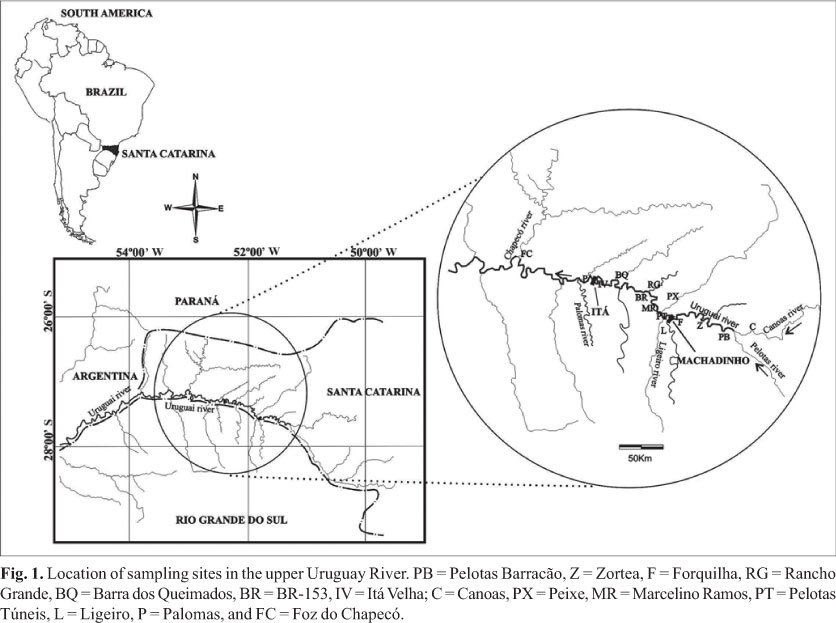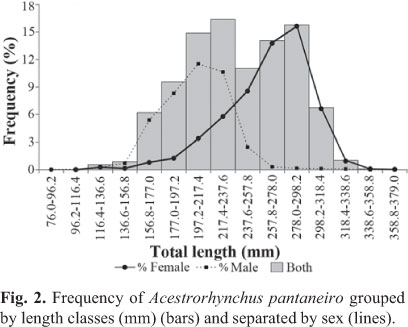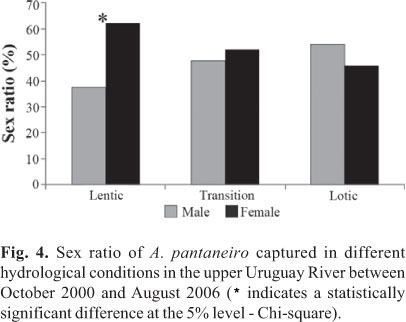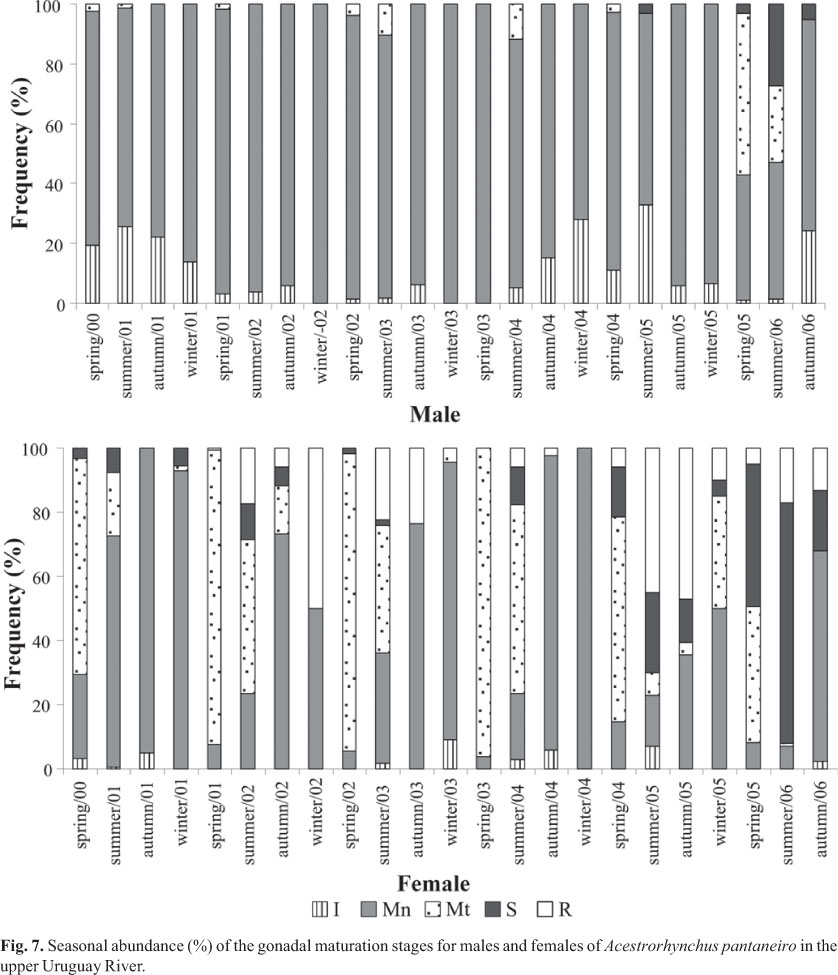The reproductive and feeding biology of Acestrorhynchus pantaneiro were studied in the upper Uruguay River, southern Brazil. Fourteen sites were surveyed seasonally between 2000 and 2006. A total of 3,427 fish were caught, being 2,015 females and 1,412 males. The sex ratio was 1.66:1 (female:male) in lentic habitats (p<0.05), but showed equal proportion in lotic and transition habitats. Feeding activity was similar for both sexes and showed little variation along the year. The analysis of stomach contents of 2,401 stomach showed that "fish" was the most consumed resource in all different habitats, corresponding to 99% of the food in the gravimetric analyzes. The species showed a multiple spawning type with a long reproductive period, although the highest intensity of reproduction occurred between the beginning of spring and summer, marked by the highest GSI and advanced gonadal maturity stages. Relative fecundity (mean ± SD) was 139 ± 56 oocytes per mm of total length and 152 ± 66 oocytes per gram of total weight. The mean absolute fecundity was 33,470 ± 19,151 oocytes and the average of the mature oocytes diameter was 897.5 ± 365.4 µm. Acestrorhynchus pantaneiro is more abundant in lentic environments and presents biological characteristics that favor the establishment of the species in dammed rivers.
Feeding dynamic; Peixe-cachorro; Reproductive dynamic; Saicanga








